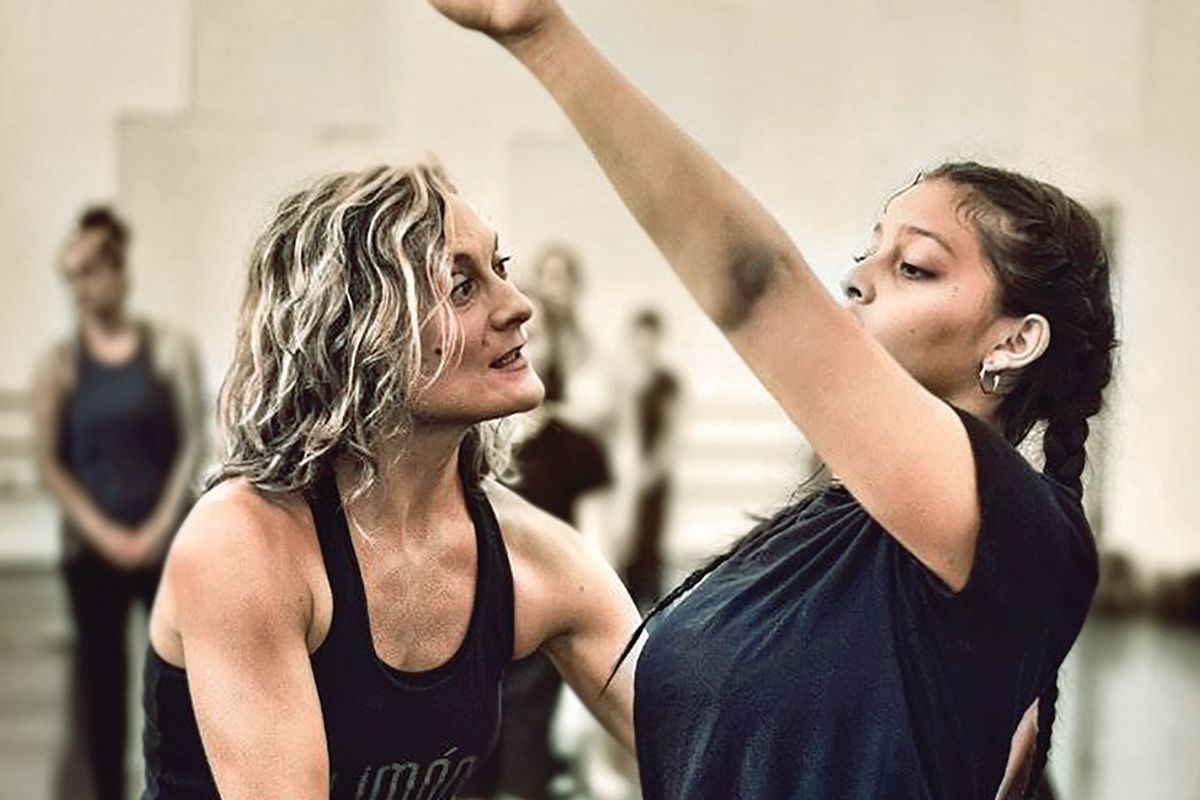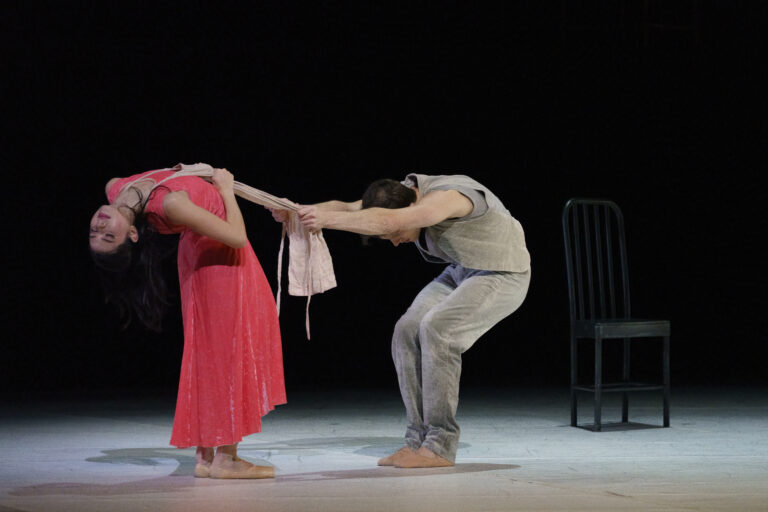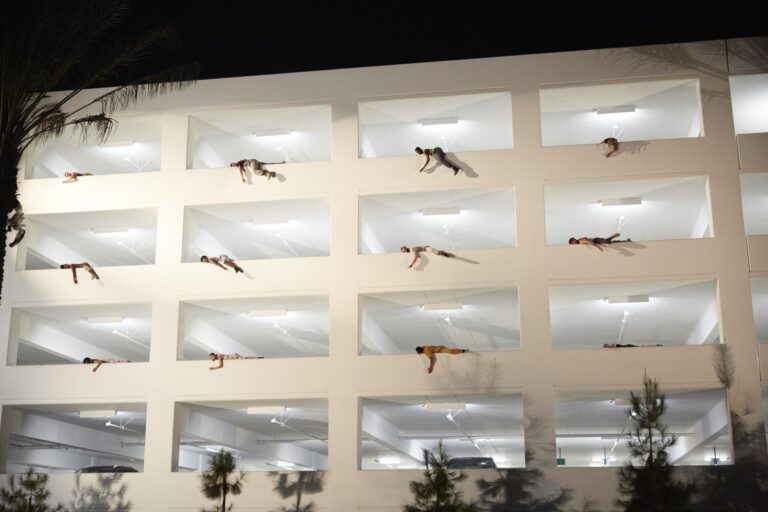
In every class Kathryn Alter teaches, two things are immediately evident: how thoughtfully she chooses her words, and how much glee she gets from dancing the movement and style of modern choreographer José Limón. At the 2019 Limón summer workshop at Kent State University, Alter demonstrated a turning triplet with her arms fully outstretched, a smile stretching easily across her face. “It should be as if…” She paused to think of the perfect analogy that would help the dancers find the necessary circularity of the movement. “As if you live in a doughnut!” she finished, grinning broadly. The dancers gathered around her laughed—her smile and love for something as foundational as a triplet was contagious.
As a member of the famed Limón Dance Company for 15 years, Alter is intimately familiar with Limón’s legendary movement vocabulary, full of suspension and spirals. As associate program director for the company’s professional training program, she is careful to never let her teaching become prescriptive. Instead, she consistently affords students the time and guidance they need to make their own discoveries in Limón’s style and work.
Alter has been cultivating this teaching method—refusing to tell students what not to do—since she first took class from Betty Jones, a founding member of the Limón company. “She would say, ‘Words are really important,'” says Alter. “She never said something unintentional.” That philosophy has shaped the way Alter transmits Limón’s work. “Telling someone what they shouldn’t be doing is very different from telling someone what they could be doing,” she says. “You can’t suggest a possibility through the negative.”
For example, when a dancer struggles to hinge backward without a convex chest, Alter doesn’t simply tell her to not arch her back on the way down to the floor. Instead, she asks the student to “make space for your organs in your back.” This new imagery works: The dancer hinges backward toward the floor with an uncurved spine. Later, when another dancer can’t seem to raise her gaze fully toward the ceiling during a high release, Alter again finds a new way to demonstrate what she’s looking for. “See with more than your eyes,” she coaxes. “Think of your eyes as being on your solar plexus.”
This attitude is part of Alter’s mission to let students access their individuality, even within a recognizable style. “The overarching thing that’s important to me is that the dancers can be themselves, dancing,” she says. “Can I help this person understand what I’m trying to do as a guide for this class? And can they bring themselves to that idea in a meaningful way?” Alter reports that when she succeeds, her students dance more dynamically, “because they’re actively making choices about what they’re doing.”
Of course, risk is often accompanied by failure. But discovery can’t exist without occasional mistakes—and Alter knows that the shortest path to discovery is for students to just go ahead and dive in. “We learn from doing it. The students must do it,” she says. “That’s the best information they can receive—better than me trying to explain it to them. They have to try it. Numerous times. The beauty of this work is that it’s so thoughtful and philosophical. But it’s not realized until someone does it.”
Jan/Feb 2020 Dance Teacher Technique – Kathryn Alter
www.youtube.com
Kathryn Alter danced with the Limón Dance Company 2002–17. She is now the associate program director for the Limón Professional Training Programs, a three-month intensive for professional dancers who are looking to deepen their knowledge of Limón. She teaches the Limón Company, students of the Limón Institute and internationally leads Limón workshops and reconstructs the works of José Limón. Her own choreography has been commissioned by Grand Valley State University and Stephens College and has been presented at the American Dance Guild and the Center for Performance Research. Alter is currently pursuing her MFA at Hunter College.
Ruben Chavez, a professional dancer in Colombia, has been studying Limón for two years.




